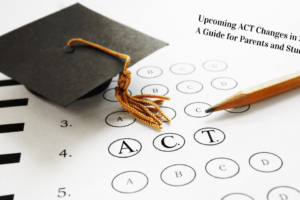
How to Improve Student Conduct Using RTI For Behavior
As previously discussed a couple of weeks ago, Response to Intervention (RTI) is a program used quite frequently around the country. Established in 2004 through the federal government’s Individuals with Disabilities Act (IDEA), RTI is used in most school districts to identify and assist those students struggling with academics.
Furthermore, RTI was created for both academics and behavior. However, many schools are just focusing on RTI for academics. There is certainly nothing wrong with that, but it may be time for these districts to look into RTI for behavior.
Students with behavioral issues can lead to a lifetime of misery. If their conduct does not improve, worst-case scenario, they could be looking at having problems with the law later on. At the very least, it will affect their positive relationships with others. After all, the right people in society do not want to associate with those who are always causing problems. 
RTI for Student Behavior
Schools should follow four steps when developing an RTI program for behavior.
- First, identify the students who are struggling with their conduct. This involves talking with classroom teachers, other students, recess supervisors, the school counselor, and even lunchroom staff. It may be a good idea to reach out to parents who believe their children are having a difficult time behaving themselves.
- Use strategies and activities at each of the three tiers for RTI behavior to identify and solve the problems.
- Monitor the students’ progress to determine what is and is not working.
- Assemble a group of teachers, administrators, counselors, and other staff to form the RTI for behavior group to help make the tough decisions for each student.
Tier 1
Tier 1 involves the entire classroom. For most students, a set of rules and guidelines established by the classroom teacher for conduct will be enough to keep them in line. When students have issues, 80 to 90 percent of them can be corrected by the classroom teacher alone. This may involve using positive reinforcement or having to issue detentions or take away recess time. Again, for most students, this will remedy the behavior problems.
Tier 2
Tier 2 interventions are for the students who are not adequately conducting themselves even after all the work by the classroom teacher. This may involve only 10 to 15 percent of the students in the classroom. These students have more severe behavior issues, and working with them individually is needed.
It may involve having a behavior specialist working with a small group of students to develop alternative approaches to how they are conducting themselves in certain situations. The student may have to take a timeout, count to ten, take a deep breath, or even get a drink to keep from acting out.
If the student is having trouble with certain peers, keeping them separated or trying to help them establish a truce are two options. RTI for behavior will often stress positive reinforcements for students experiencing conduct issues, so bear that in mind.
The RTI group composed of educational professionals should reassess these students after a few weeks to determine if these interventions seem to be making a difference. If they are not, then it could be time for these students to enter Tier 3.
Tier 3
Only a tiny percentage of students should be in Tier 3 interventions for behavior. One or two percent should be the goal. If there are more, then it may be time to look at how discipline is handled in the district.
Tier 3 is in addition to Tiers 1 and 2, so the student would be receiving quite a bit of extra guidance to help straighten out any issues. Parents, therapists, counselors, and other specialists should all be involved in the Tier 3 process. Finding the root cause of the problems, if there is a root cause, should be one of the main goals.
Students in Tier 3 generally will not be in the average classroom for much of the day. They need more one-on-one guidance to handle their behavior issues.
No Two RTI Programs Are the Same
School districts will tweak their RTI programs to go along with the strengths and weaknesses of their school. What may work for one school might not work for another. Furthermore, RTI is flexible, so each district should take control of its path forward. With the right path, the most complex cases can be solved.
If your school could use more guidance on handling RTI, iAchieve does offer professional development workshops if needed.
RELATED BLOG POSTS
How to Tap into Resources for the Struggling Student
How to Help Students Cope with Emotional Situations
It Can Happen Here: Adolescents in Crisis and What We Can Do



